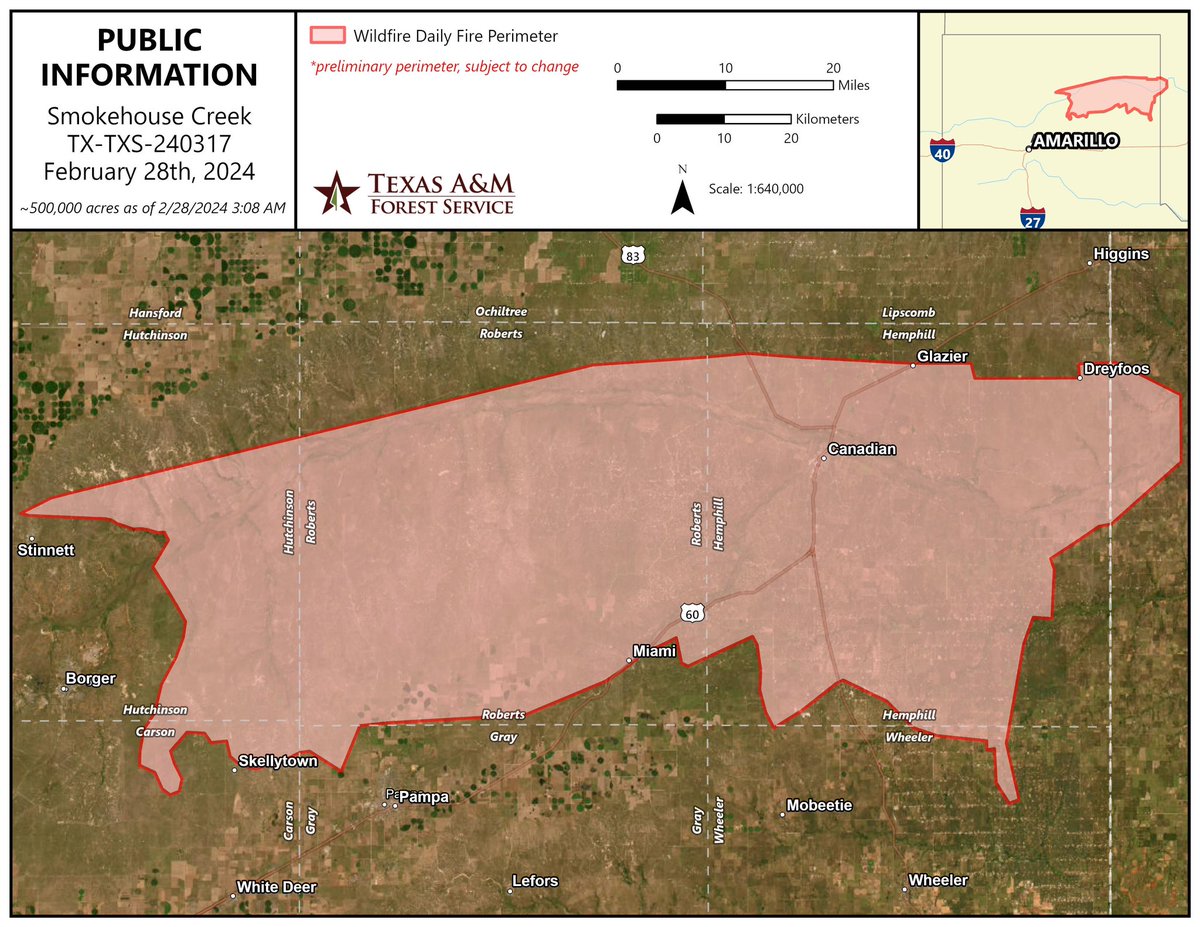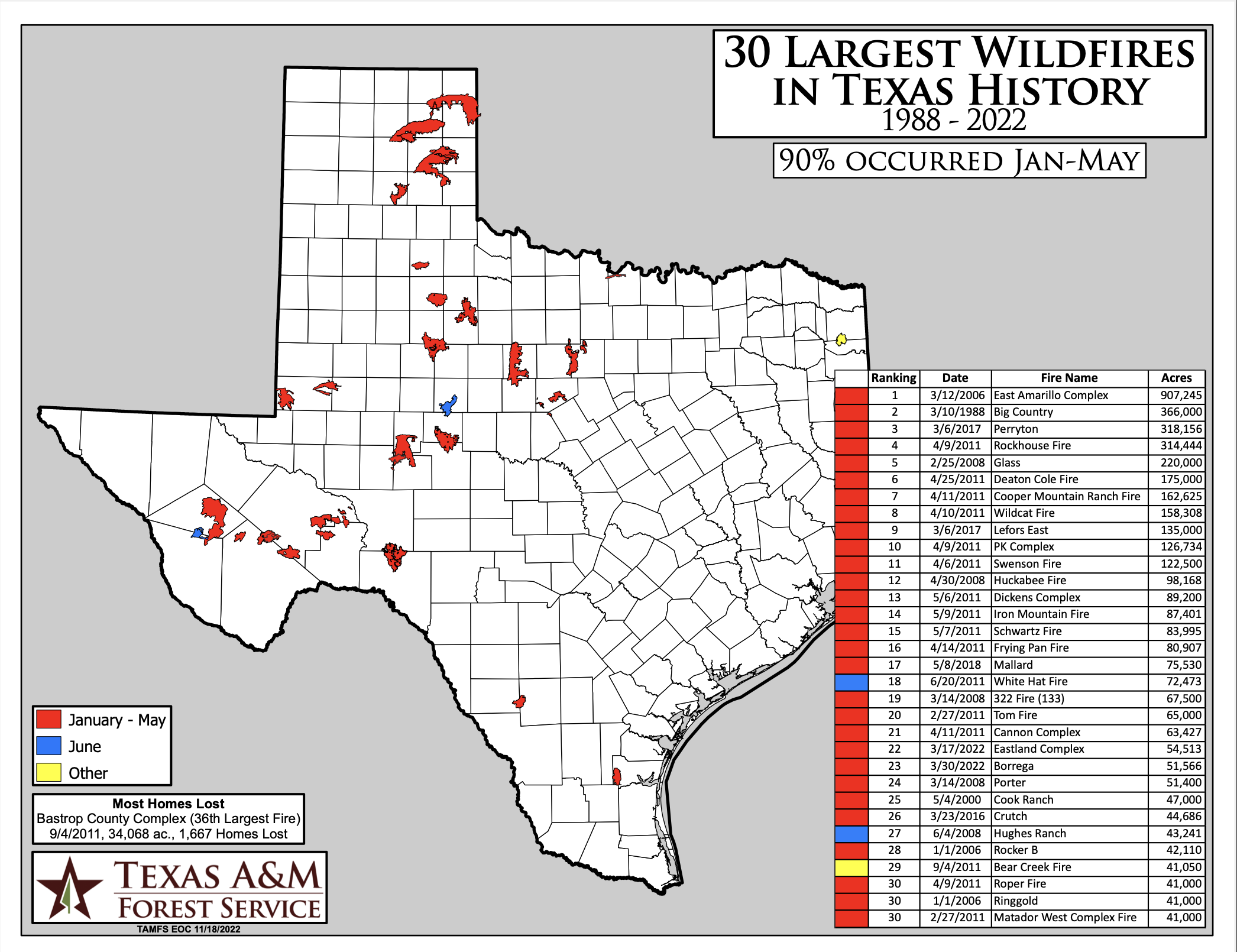SAN ANGELO, TX - A powerful cold front sweeping through San Angelo is carrying smoke from multiple wildfires raging in the Panhandle, creating hazy conditions in West Central Texas.
According to the National Weather Service San Angelo District, the front, currently moving through the region, is expected to maintain smoky conditions into tomorrow morning.
As of the latest update at 2:30 a.m., there is no active wildfire directly threatening the West Central Texas area.
However, the Smokehouse Creek Fire in Hutchinson County stands as a devastating exception. It has grown to an estimated 500,000 acres, making it the second-largest wildfire in Texas history.
The Texas A&M Forest Service reported that the fire's behavior has moderated with decreased winds, though it continues to actively burn. The fire's perimeter, outlined on a public information map, is subject to change.

Texas Agriculture Commissioner Sid Miller expressed concern about the ongoing wildfires, particularly the Smokehouse Creek Fire, stating that farmers and ranchers in the Panhandle are facing the "destruction" of their livelihoods. The fire's impact on lives, property, and the agriculture industry is significant.
"This not only threatens lives and property but also has a significant impact on our agriculture industry," Miller said in a statement. "Our thoughts are with them during this challenging time, and we're committed to supporting their recovery efforts every step of the way."
The Smokehouse Creek Fire is now part of a list of the thirty largest wildfires in Texas, which occurred between 1988 and 2022.

The largest, the East Amarillo Complex in 2006, covered 907,245 acres. The Big Country Fire in 1988, now the third-largest, burned 366,000 acres, followed by Perryton in 2017 at 318,156 acres, and Rockhouse Fire at 314,444 acres.
In response to the escalating wildfire situation, the Texas Division of Emergency Management has activated various state emergency response resources.
This includes over 95 firefighters from the Texas A&M Forest Service, heavy equipment, All Hazard Incident Management Team personnel, and multiple strike teams equipped with personnel and fire engines.
Other state agencies, such as the Texas National Guard, Texas Department of Transportation, Texas Department of State Health Services, Texas Animal Health Commission, and Texas Commission on Environmental Quality, are also providing support.
Texans are urged to make emergency plans, limit activities that may cause sparks or flames, follow official directions and keep emergency supplies easily accessible.
For more information on wildfire safety, residents can visit TexasReady.gov and tfsweb.tamu.edu.
Subscribe to the LIVE! Daily
Required






Post a comment to this article here: